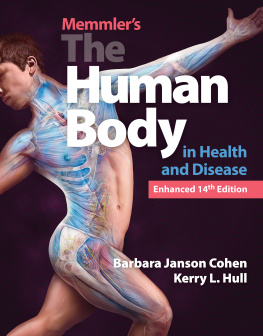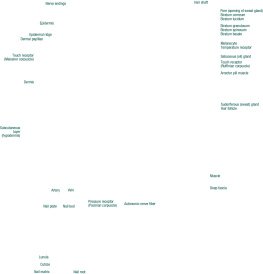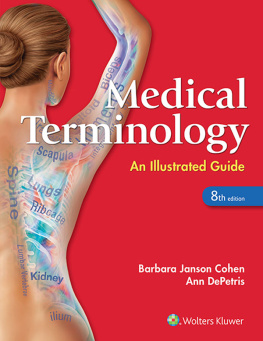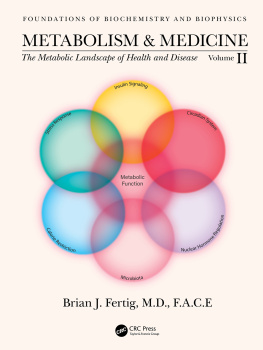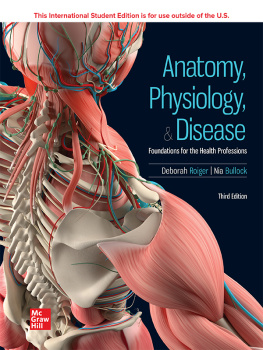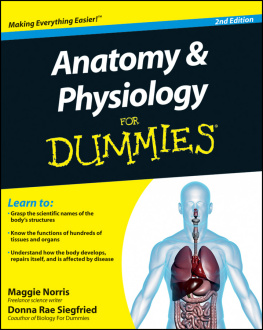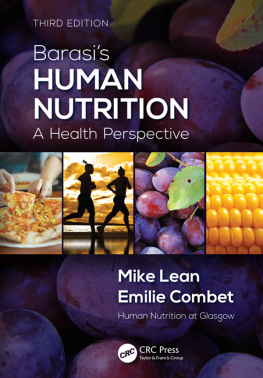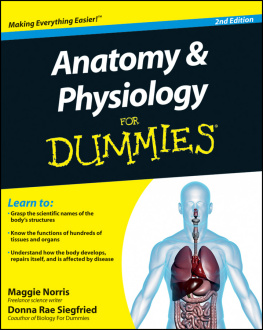Landmarks
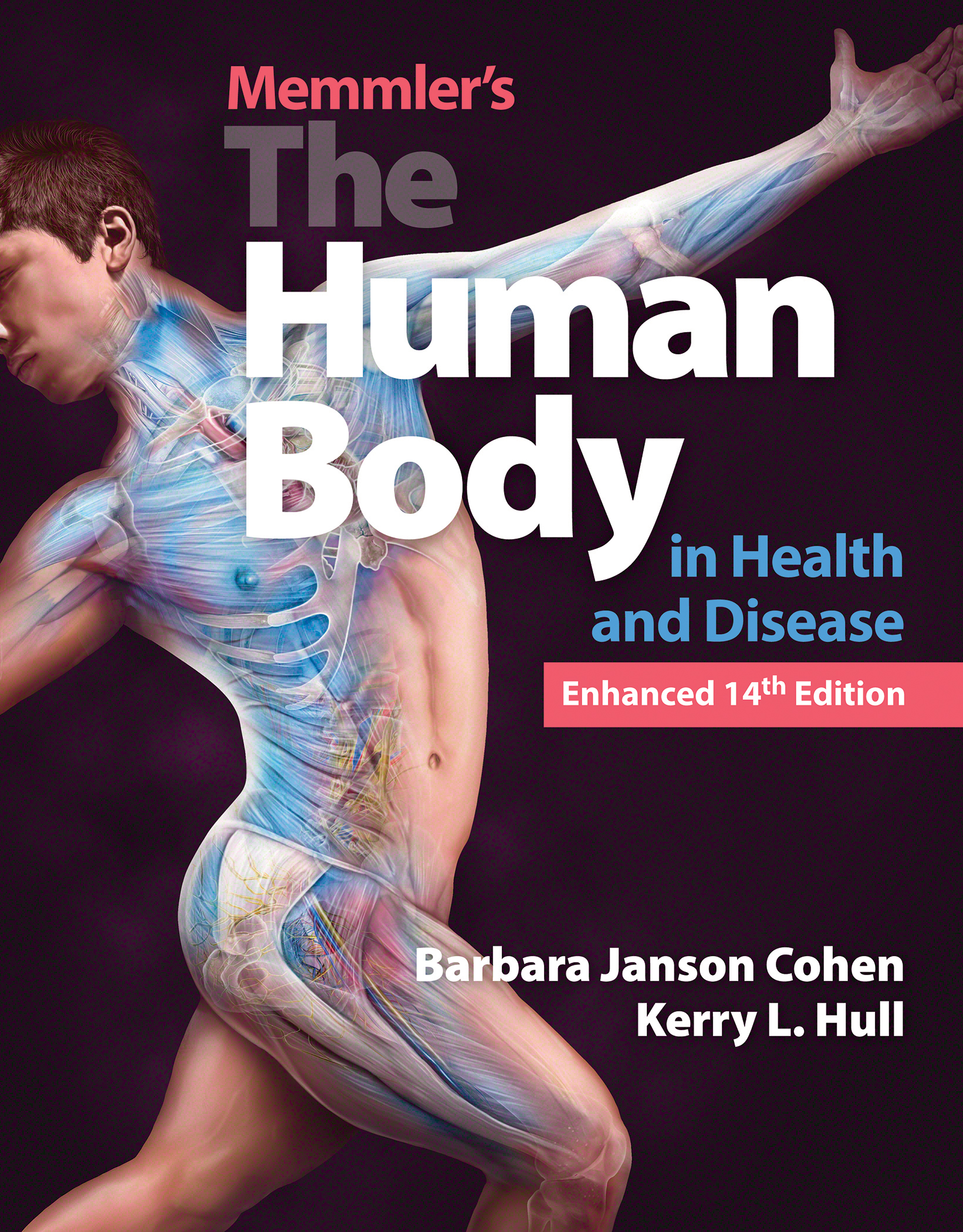
KEY IDEA TABLE
Key Idea | Explanation | Chapter (page) |
| Structure-Function | The anatomy (structure) of an element determines its physiology (function). | 1 (p. 4) |
| Levels of Organization | All living things are organized from very simple levels (e.g. atoms) to very complex levels (e.g. organisms). Anatomy and physiology can be studied at any of these levels. | 1 (p. 4) |
| Homeostasis and Negative Feedback | Despite changing environmental conditions, critical body functions such as blood pressure and temperature are maintained within tight limits. Negative feedback is a control system based on information returning to a source. It reverses any upward or downward shift in a particular body condition. | 1 (p. 5) |
| Barriers | Barriers help the body maintain distinct environments. For instance, the skin and mucous membranes separate the inside of the body from the external environment, and the cells plasma membrane separates the intracellular fluid from the extracellular fluid. | 1 (p. 7) |
| Gradients and Flow | The movement (flow) of a particular substance is promoted by a gradient (a difference in a physical or chemical value between two areas) and opposed by resistance. For instance, resistance can reflect membrane thickness for flow across barriers, and tube width for flow through tubes. | 1 (p. 8) |
| Water | Water is of critical importance in many physiological processes. | 2 (p. 27) |
| Enzymes | Most chemical reactions require the actions of enzymes. The activity of specific enzymes can be increased or decreased in response to changing body conditions. | 2 (p. 32) |
| Energy | Organisms need to generate and use energy. Tracking the flow of energy and matter through systems is a key part of understanding physiology. | 2 (p. 34) |
| Genes Code for Proteins | DNA is the cell's master blueprint, determining the bodys structures and functions. Mutations, changes in the DNA sequence of a gene, can change the shape of the resulting protein, or even stop it from being synthesized. | 3 (p. 54) |
| Causation and Correlation | Two events may be correlated (i.e. frequently occur together) without one event causing the other. Establishing causation involves specifying a sequence of interactions linking the cause to the effect. | 5 (p. 104) |
| Adaptation | Organisms adapt to the environment; that is, their structure, function, or behavior changes in response to changes in their environment. Adaptation often results from injury, and helps protect against future damage. | 6 (p. 118) |
| Communication | The body uses chemical and electrical signals to convey information. Chemical signals alter the activity of target cells by binding specific receptors. | 8 (p. 171) |
| Mass Balance | The amount of a substance stored in a system is determined by inputs and outputs. | 14 (p. 332) |
Memmlers
The Human Body
in Health and Disease
Enhanced 14th Edition
Barbara Janson Cohen, BA, MSEd
Kerry L. Hull, BSc, PhD
Marthe Adler, MD, AGNP-BC
Consulting Editor

JONES & BARTLETT
LEARNING

World Headquarters
Jones & Bartlett Learning
5 Wall Street
Burlington, MA 01803
978-443-5000
www.jblearning.com
Jones & Bartlett Learning books and products are available through most bookstores and online booksellers. To contact Jones & Bartlett Learning directly, call 800-832-0034, fax 978-443-8000, or visit our website, www.jblearning.com.
Substantial discounts on bulk quantities of Jones & Bartlett Learning publications are available to corporations, professional associations, and other qualified organizations. For details and specific discount information, contact the special sales department at Jones & Bartlett Learning via the above contact information or send an email to .
Copyright 2019 by Jones & Bartlett Learning, LLC, an Ascend Learning Company
All rights reserved. No part of the material protected by this copyright may be reproduced or utilized in any form, electronic or mechanical, including photocopying, recording, or by any information storage and retrieval system, without written permission from the copyright owner.
The content, statements, views, and opinions herein are the sole expression of the respective authors and not that of Jones & Bartlett Learning, LLC. Reference herein to any specific commercial product, process, or service by trade name, trademark, manufacturer, or otherwise does not constitute or imply its endorsement or recommendation by Jones & Bartlett Learning, LLC and such reference shall not be used for advertising or product endorsement purposes. All trademarks displayed are the trademarks of the parties noted herein. Memmlers The Human Body in Health & Disease, Enhanced Fourteenth Edition is an independent publication and has not been authorized, sponsored, or otherwise approved by the owners of the trademarks or service marks referenced in this product.
There may be images in this book that feature models; these models do not necessarily endorse, represent, or participate in the activities represented in the images. Any screenshots in this product are for educational and instructive purposes only. Any individuals and scenarios featured in the case studies throughout this product may be real or fictitious, but are used for instructional purposes only.
This publication is designed to provide accurate and authoritative information in regard to the Subject Matter covered. It is sold with the understanding that the publisher is not engaged in rendering legal, accounting, or other professional service. If legal advice or other expert assistance is required, the service of a competent professional person should be sought.
21797-1
Production Credits
VP, Product Management: Amanda Martin
Director of Product Management: Cathy L. Esperti
Product Specialist: Ashley Malone
Product Coordinator: Elena Sorrentino
Digital Project Specialist: Angela Dooley
Director of Marketing: Andrea DeFronzo
Production Services Manager: Colleen Lamy
VP, Manufacturing and Inventory Control: Therese Connell
Product Fulfillment Manager: Wendy Kilborn
Composition: S4Carlisle Publishing Services
Project Management: S4Carlisle Publishing Services
Cover & Text Design: Kristin E. Parker
Senior Media Development Editor: Troy Liston
Rights & Permissions Manager: John Rusk
Cover Image (Title Page, Part Opener, Chapter Opener): TBD
Printing and Binding: LSC Communications

